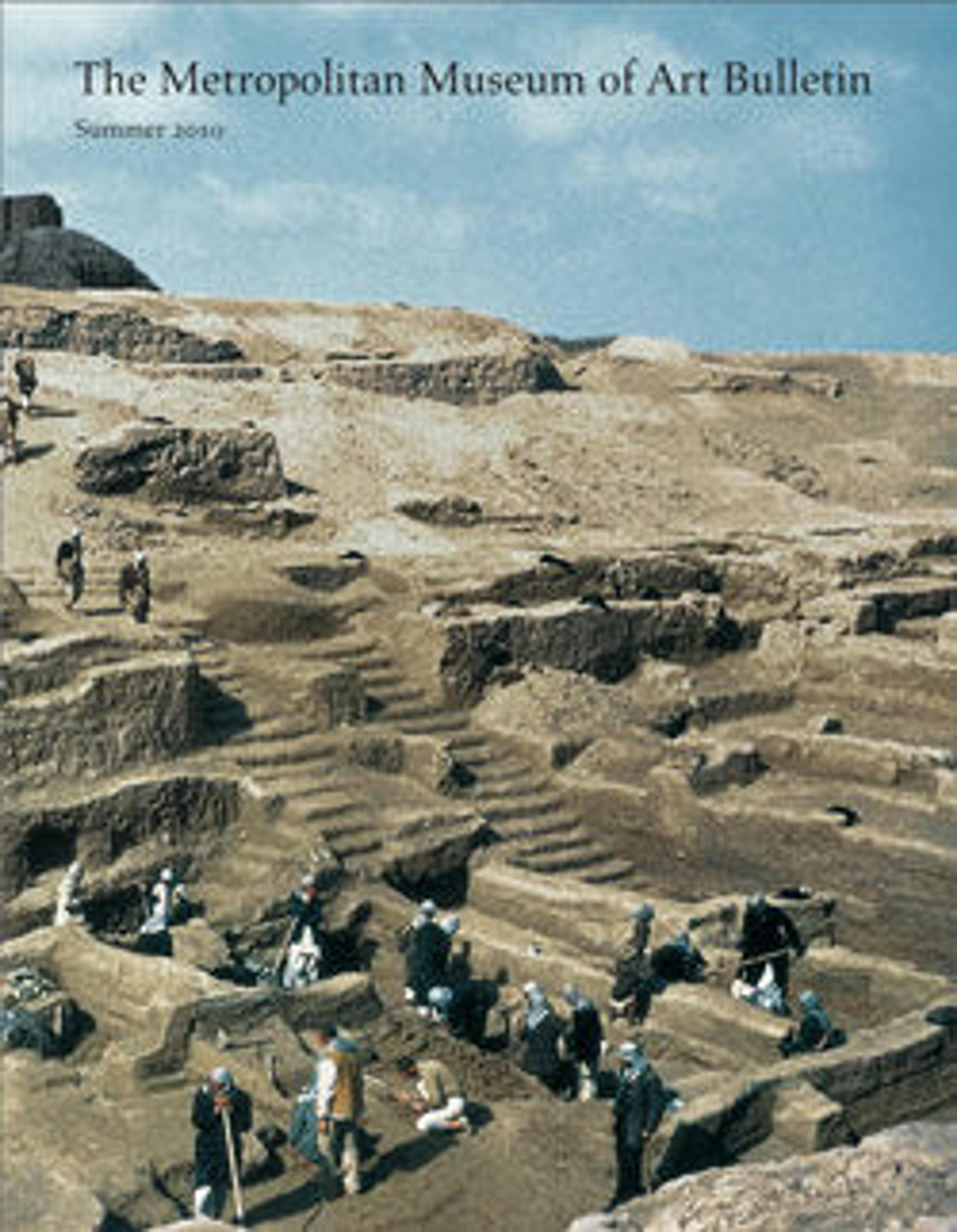Textile fragment
These textile fragments are made of wool and cotton, and are decorated with bands of red rosettes and blue squares. They are made using a weft-faced tabby weave, such that the colored decorations are reversed when viewed from the back. This is known as a zilu, a type of Iranian carpet first attested in the 8th century A.D. Yet these fragments, which were excavated at Shahr-i Qumis in northern Iran, date to the 6th century A.D. and are thus the earliest known zilu carpet.
Shahr-i Qumis has been identified as the ancient city of Hecatompylos, established by the Parthians as their capital by about 200 B.C. However, these fragments come from Room 23 at Site VI, which was seemingly converted into a burial chamber during the 6th century A.D., a date indicated by a coin of the Sasanian king Hormizd IV (reigned A.D. 579-590). The human remains discovered there consist of disarticulated bones, which is in keeping with Zoroastrian burial practice. Yet the bones appear to have been wrapped in leather and wool, which would be unusual for Zoroastrians, as is the inclusion of a coin with the body. Thus it is possible that in the 6th century Zoroastrian burial practices were still under development or that there were regional variations that are not recorded in surviving texts.
Shahr-i Qumis has been identified as the ancient city of Hecatompylos, established by the Parthians as their capital by about 200 B.C. However, these fragments come from Room 23 at Site VI, which was seemingly converted into a burial chamber during the 6th century A.D., a date indicated by a coin of the Sasanian king Hormizd IV (reigned A.D. 579-590). The human remains discovered there consist of disarticulated bones, which is in keeping with Zoroastrian burial practice. Yet the bones appear to have been wrapped in leather and wool, which would be unusual for Zoroastrians, as is the inclusion of a coin with the body. Thus it is possible that in the 6th century Zoroastrian burial practices were still under development or that there were regional variations that are not recorded in surviving texts.
Artwork Details
- Title:Textile fragment
- Period:Sasanian
- Date:ca. 6th century CE
- Geography:Iran, Shahr-i Qumis (ancient Hecatompylos)
- Culture:Sasanian
- Medium:Wool, cotton
- Dimensions:9.25 x 16.14 in. (23.5 x 41 cm)
- Credit Line:Purchase, H. Dunscombe Colt Gift, 1969
- Object Number:69.24.35
- Curatorial Department: Ancient West Asian Art
More Artwork
Research Resources
The Met provides unparalleled resources for research and welcomes an international community of students and scholars. The Met's Open Access API is where creators and researchers can connect to the The Met collection. Open Access data and public domain images are available for unrestricted commercial and noncommercial use without permission or fee.
To request images under copyright and other restrictions, please use this Image Request form.
Feedback
We continue to research and examine historical and cultural context for objects in The Met collection. If you have comments or questions about this object record, please contact us using the form below. The Museum looks forward to receiving your comments.
